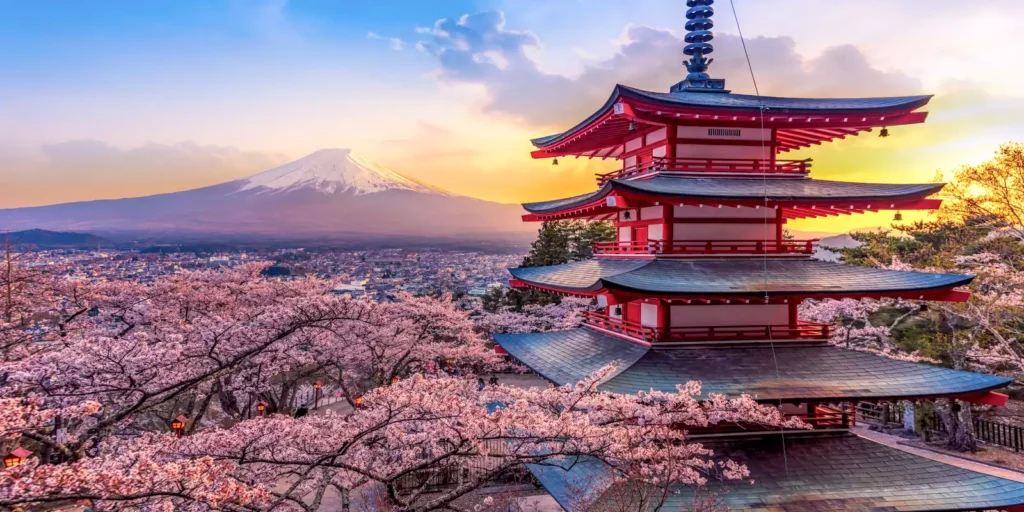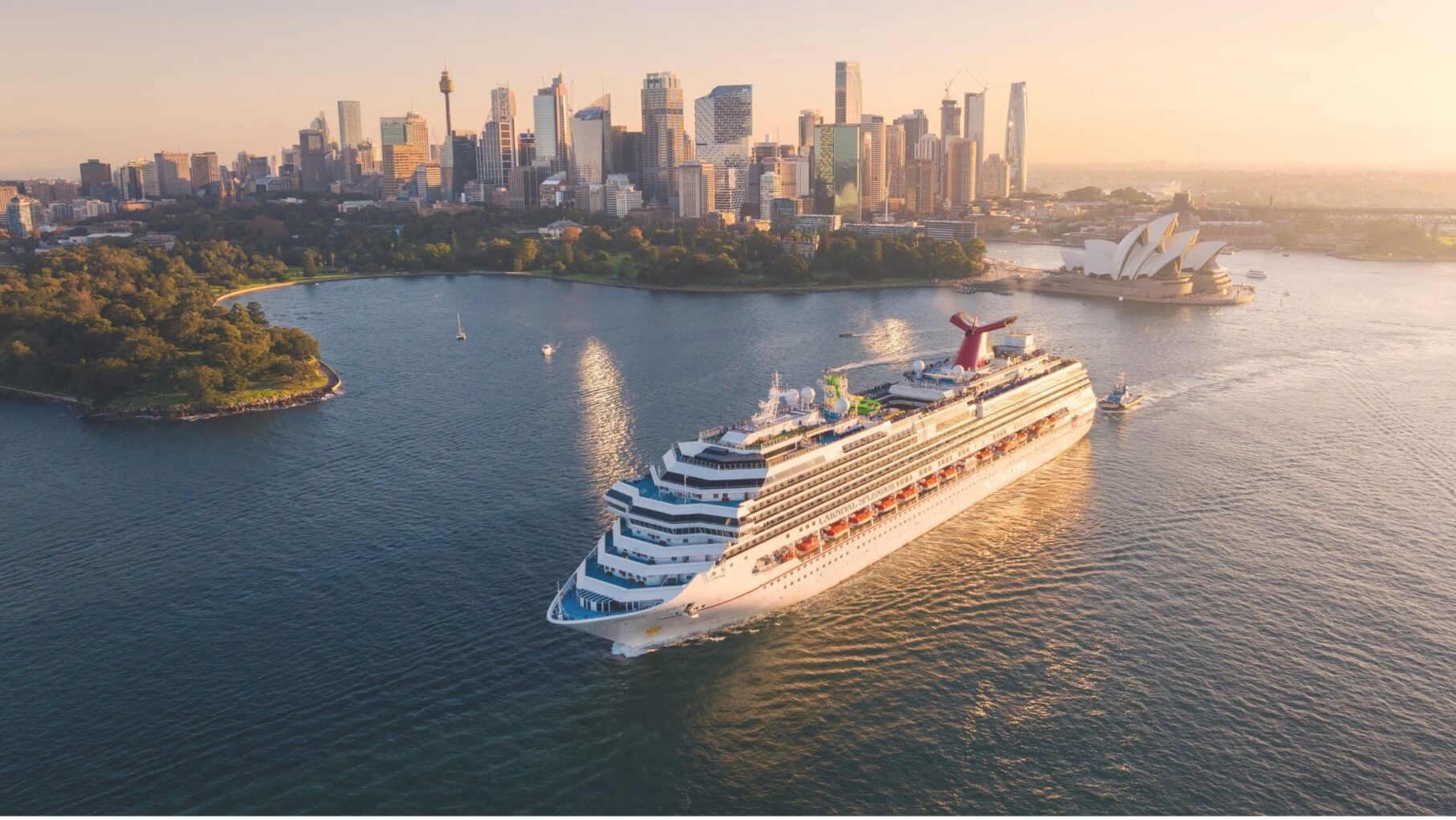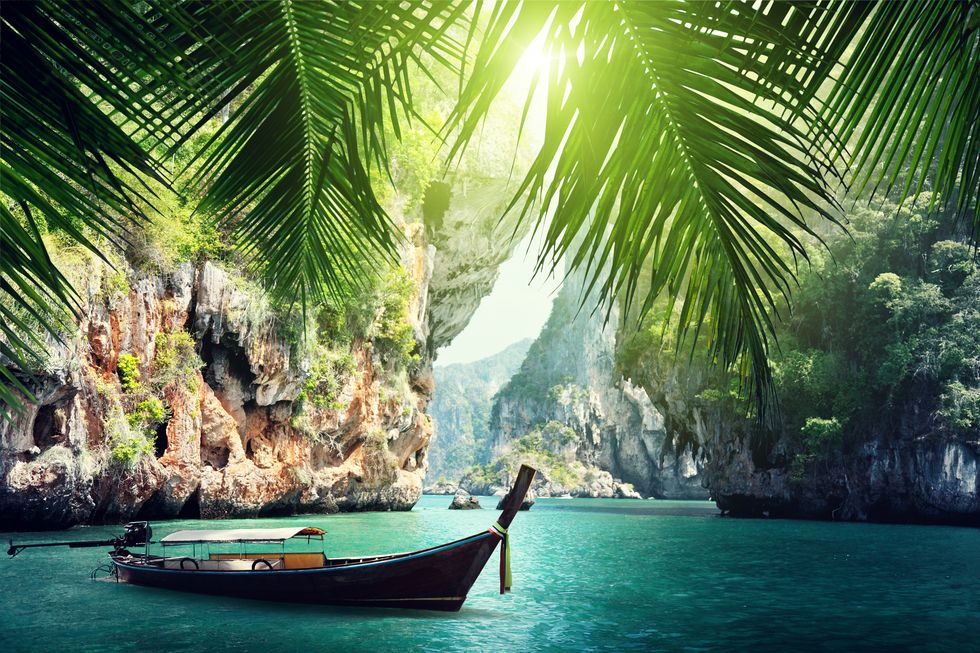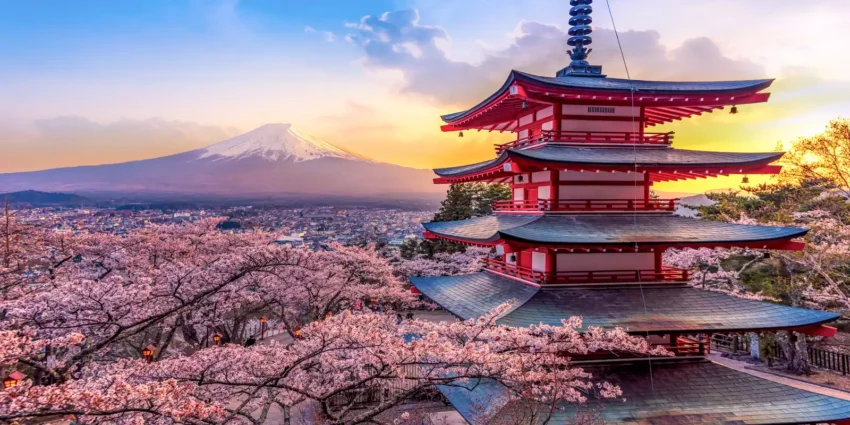
With dreamy clips of Kyoto’s soft pink cherry blossoms and Tokyo’s vibrant, anime-inspired street fashion flooding social media, it’s no wonder that Japan has become a top bucket-list destination for families with teens.
From budget-friendly Tokyo Disneyland to ancient samurai villages, monkey parks, and historic castles, Japan offers something for everyone. But planning a trip can feel overwhelming, especially when it comes to navigating language barriers and finding family-friendly accommodations, like connecting rooms or vacation rentals with kitchenettes, says Tamatha Frederick, a senior Japan specialist at Audley Travel.
That’s why many parents opt for a cruise or guided land tour. Both options come with their pros and cons, and it’s important to weigh them carefully when deciding which is best for your family.
Ease and Convenience (Winner: Cruises)

Cruises are the easiest option when it comes to convenience. They cater to kids of all ages and offer extra perks like kids’ and teens’ clubs, which give parents a chance to relax while the kids are entertained—perfect for those with younger children (at least three years old and potty-trained).
Meals are another win for cruises. Kids’ menus and quick breakfast and dinner options are available, so you can fuel up before heading out for an authentic lunch or hot pot dinner on land. And the best part? You only have to unpack once.
While cabins may not be as spacious as some hotel rooms, they’re close to dining areas, and the ship has plenty of spaces where older kids can hang out—like ice cream bars, pools, and movie nights on deck. Premium packages also make life easier, offering in-room food and drink delivery—ideal after a long day of exploring.
The downside? Cruises miss out on giving you the chance to stay in more authentic land-based accommodations, like traditional ryokans with tatami mats, low tables, and relaxing onsens (hot springs).
Range of Activities (Winner: Land Tours)

Custom land tours shine when it comes to tailoring the trip to your family’s interests. Whether it’s ramen-making, taiko drumming, or ninja dojo classes, these tours offer hands-on experiences alongside classic sightseeing, like shrine visits and samurai village tours—things both cruises and land tours have in common.
Cruises typically stop at kid-friendly spots like aquariums and hot springs, but they cater to large groups, so they’re less likely to personalize experiences. With a land tour, you can go all-in on unique adventures. For example, InsideJapan Tours can customize an itinerary for theme park enthusiasts, including Tokyo Disneyland, Sanrio Puroland (Hello Kitty’s world), and Fuji-Q Highland’s roller coasters. They’ll also help you secure hard-to-get tickets—like for the Ghibli Museum—or arrange off-the-beaten-path experiences, which are especially valuable during peak seasons (April to June).
Bethan Grant, whose husband co-founded InsideJapan Tours, shares that some of her family’s best memories were the unexpected adventures—like hopping on taxi boats near Tokyo, taking a tour of Japan’s parliament, catching a sumo match, or paddleboarding on Lake Ashi near Mount Fuji. “There’s only so much trailing around and looking at things before kids get bored,” she says.
Choice of Cities (Winner: Land Tours)

Cruises only stop at specific ports, but land tours let you go pretty much anywhere, thanks to Japan’s incredibly efficient trains, taxis, and buses, including the Shinkansen bullet train that can get you from Tokyo to Kyoto in just 2.5 hours.
Cruises do hit popular destinations like Kyoto, Osaka, Hiroshima, Fukuoka, and Mount Fuji—but if your travel dates don’t align with a cruise that stops at your desired location, you could miss out. Plus, cruises typically only offer one day at each stop.
With a land tour, you have the flexibility to add extra days to explore places like Tokyo’s Shibuya Crossing or catch a baseball game near Yokohama’s cruise port, offering more time to dive deeper into the culture.
Affordability (Winner: Cruises)

Cruises can be more affordable, depending on your room choice. However, once you add excursions, Wi-Fi, and premium food and drink packages (for those morning coffees and evening cocktails), the costs can start to add up.
For example, an 11-day Princess Cruises trip with a teen might range from $193 to $694 per day, depending on the cabin. There are often promos—like free child fares or cabin upgrades—that can make it more affordable, so it’s worth comparing prices. Other family-friendly cruise lines in Japan include Celebrity, Royal Caribbean, MSC, and Holland America.
On the other hand, custom land tours like those offered by Audley’s average between $500–$700 per person per day, covering trains, admissions, hotels, and guides. While these can be pricier than cruises, they offer more tailored experiences.
FAQs
1. What’s the difference between a cruise and a land tour in Japan?
A cruise offers convenience with kid-friendly amenities like kids’ clubs, set meal times, and unpacking once while visiting specific ports. A land tour, on the other hand, allows more flexibility, offering personalized activities, a wider range of destinations, and the chance to stay in authentic accommodations.
2. Which option is better for families with teens?
It depends on what your family values more. Cruises provide an easy, all-inclusive experience with entertainment and meals taken care of, making it great for a laid-back trip. Land tours are better for families who want more hands-on experiences and a variety of activities tailored to their interests, offering a chance to explore at a deeper level.
3. Are cruises cheaper than land tours?
Cruises can be more affordable depending on the room choice and available promotions (like free child fares or cabin upgrades). However, once you factor in excursions, Wi-Fi, and premium food/drink packages, costs can add up. Custom land tours tend to be pricier, averaging $500–$700 per person per day, but they offer a more tailored experience.
4. Which option provides more flexibility in terms of destinations?
Land tours offer the most flexibility. With access to trains, taxis, and buses, you can explore almost anywhere, including off-the-beaten-path locations. Cruises, however, only stop at specific ports and often give just one day at each destination, limiting your time at each spot.
5. What types of activities can we expect on a land tour in Japan?
Land tours offer a wide range of personalized activities, such as ramen-making, taiko drumming, ninja dojo classes, and shrine visits. Custom tours can also include theme park visits, sumo matches, or paddleboarding on Lake Ashi, based on your family’s interests.
6. Are cruises good for younger children?
Yes, cruises are ideal for families with younger children. They offer kids’ clubs and plenty of entertainment options like pools, movie nights, and special dining options for kids. As long as children are at least three years old and potty-trained, they can enjoy these amenities.
7. How much time will we spend in each destination on a cruise?
Cruises typically stop at one port per day, giving you limited time at each destination (usually one day). If you want more time to explore each place or wish to visit destinations that aren’t on the cruise route, a land tour would give you more flexibility.
Conclusion
Both cruises and land tours offer unforgettable family trips to Japan, but the best option really comes down to your family’s preferences, budget, and comfort level. If you’re looking for ease and convenience with the perk of a relaxing cruise experience, then a cruise may be the way to go. On the other hand, if you want a more personalized, hands-on experience with the flexibility to explore a wide range of cities and activities, a guided land tour is likely a better fit.
No matter which option you choose, Japan promises a unique and enriching adventure for families with teens. From its rich culture and history to modern entertainment and unexpected surprises, it’s a destination your family will remember for years to come.
